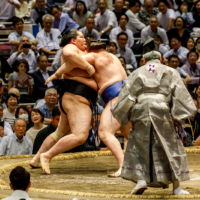Wilson Hartz's criticism of school teachers who disobeyed an order to stand and face the flag during the singing of "Kimigayo" at March graduation ceremonies shows, for me, a failure to understand the nuances of the debate ("Better to stay home than dis the flag," April 6). "Kimigayo" is usually associated with the atrocities committed by and the fascist stand taken by Japan before and during World War II. The protest is one against what "Kimigayo" represents.
While these teachers are criticized by authorities for making their stand and are often penalized, the bias shown by authorities against these teachers who are labeled "leftists" or "idealists" in a derogatory sense is apparent. When a Japanese prime minister like Junichiro Koizumi visits Yasukuni Shrine, he is applauded. He is seen to be showing strength and respect, and operating in defiance of the outrage that such visits cause in countries like China. At Yasukuni Shrine, war criminals have been enshrined. These same war criminals are associated with or committed atrocities such as the Nanking Massacre. These same war criminals marched to the tune of "Kimigayo."
In a more familiar sense, if Germans were to sing "Deutschland uber alles" with the same passion and meaning as sung during the Nazi era there would be uproar. Today, still, "Deutschland uber alles" connotes the same fascist association, so much that "Deutschland uber alles" is renown as a fascist statement with its imperial inferences. The German government has had to accommodate that truth.
Meanwhile, the mainstream in the world outside Japan does not really understand "Kimigayo." The protest is not as loud. But inside Japan some feel that the national anthem brings respect to an inglorious past.

















With your current subscription plan you can comment on stories. However, before writing your first comment, please create a display name in the Profile section of your subscriber account page.